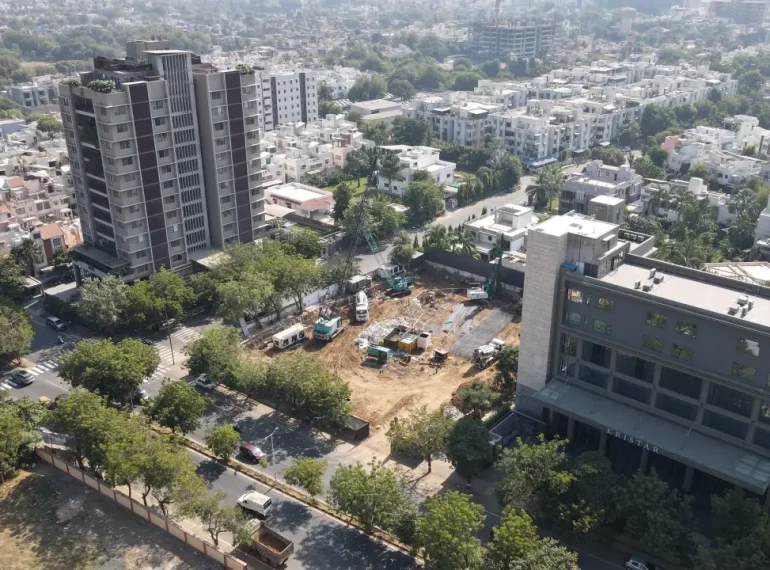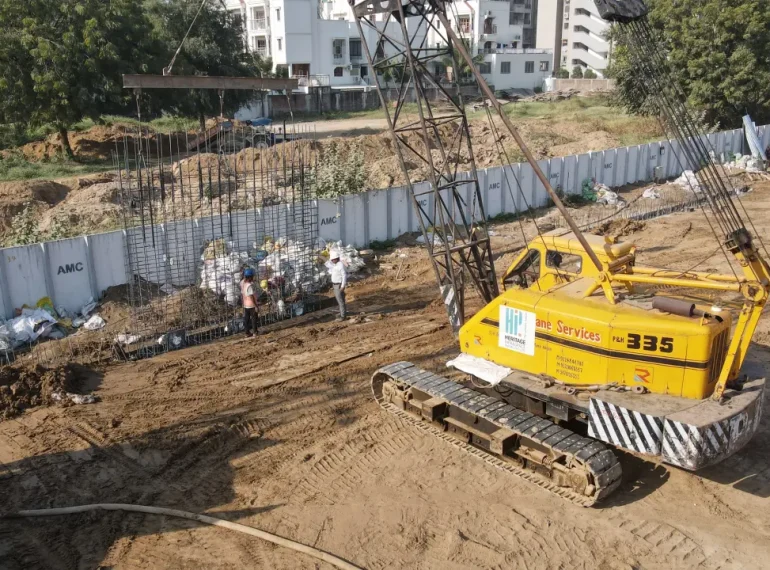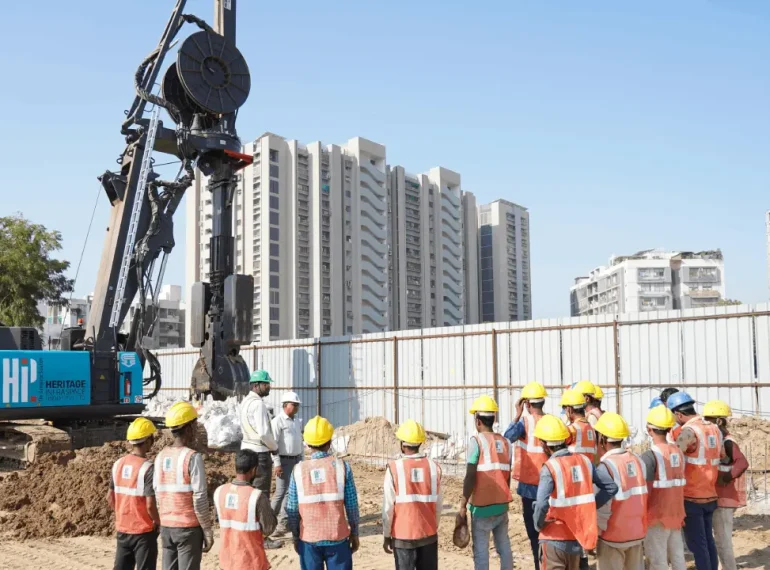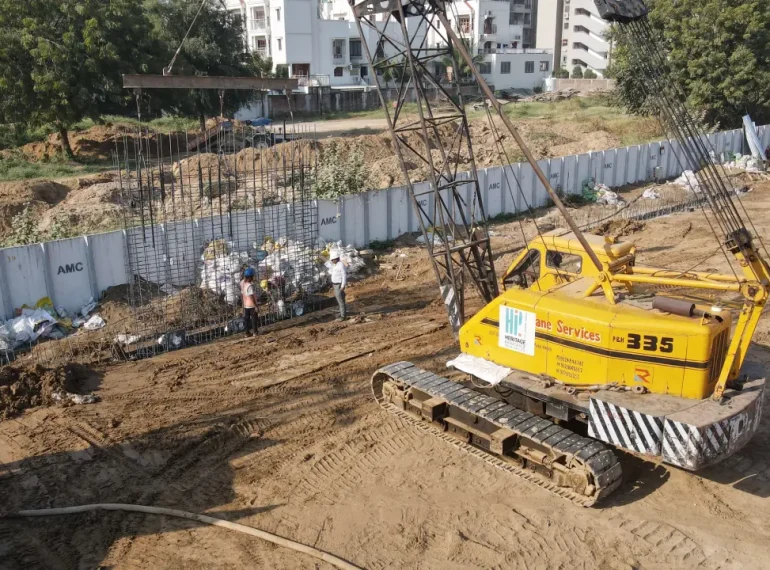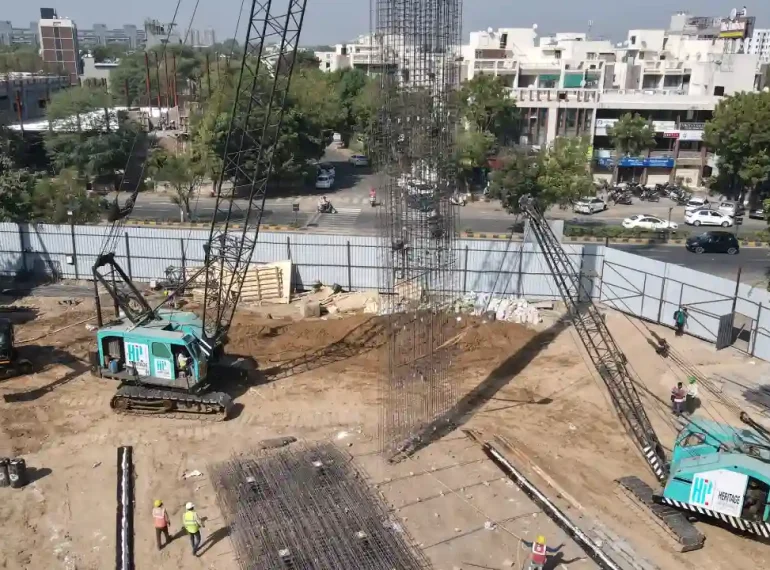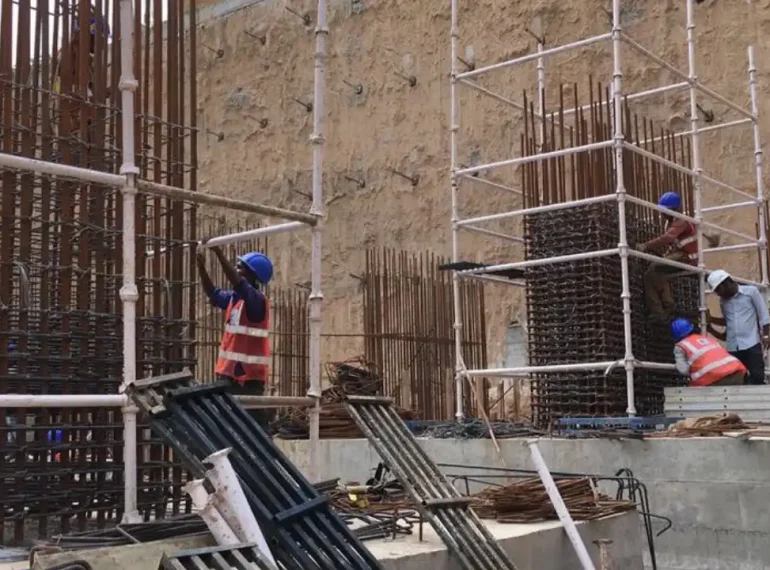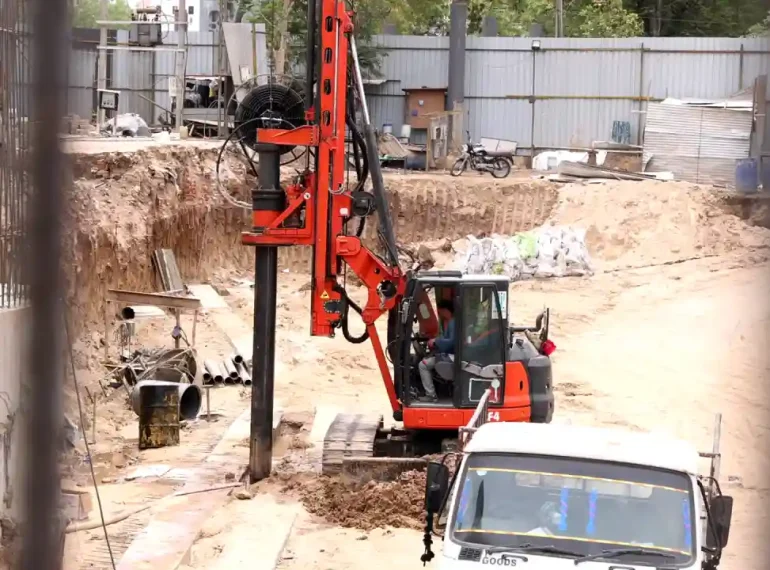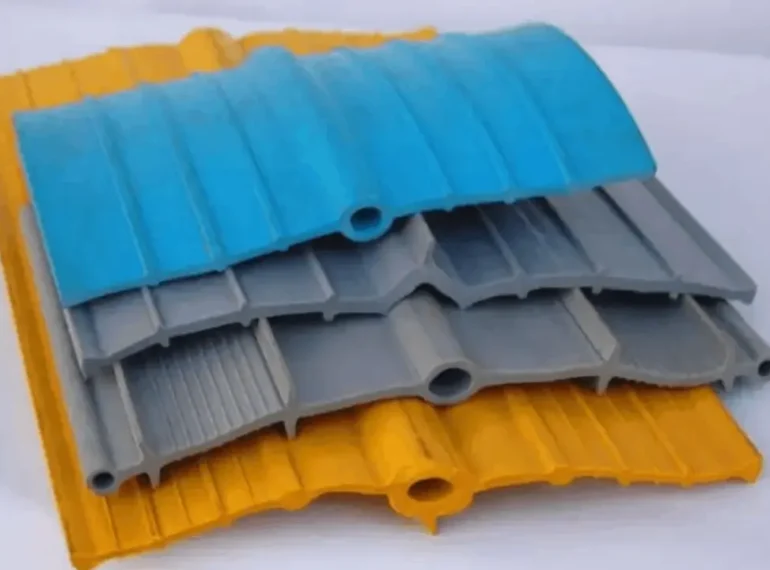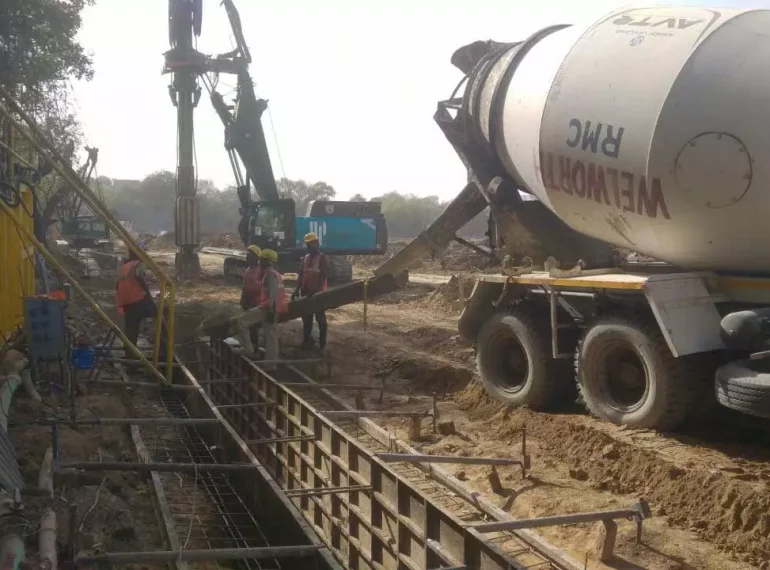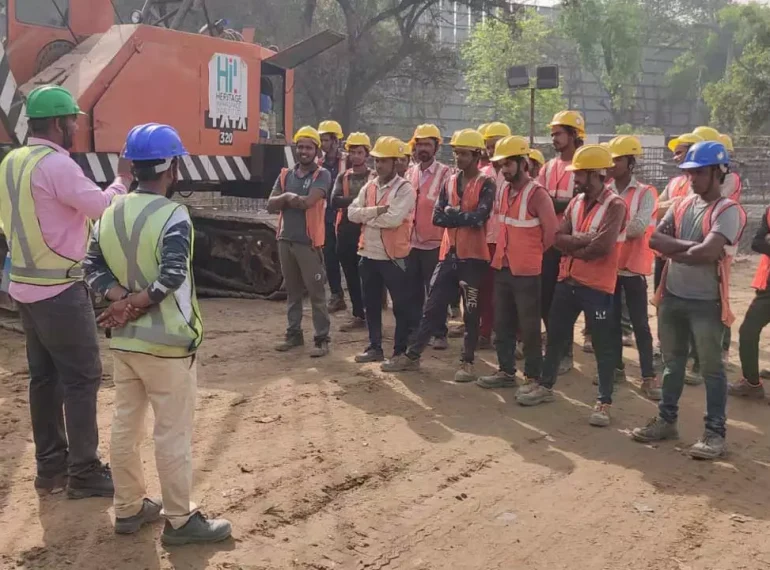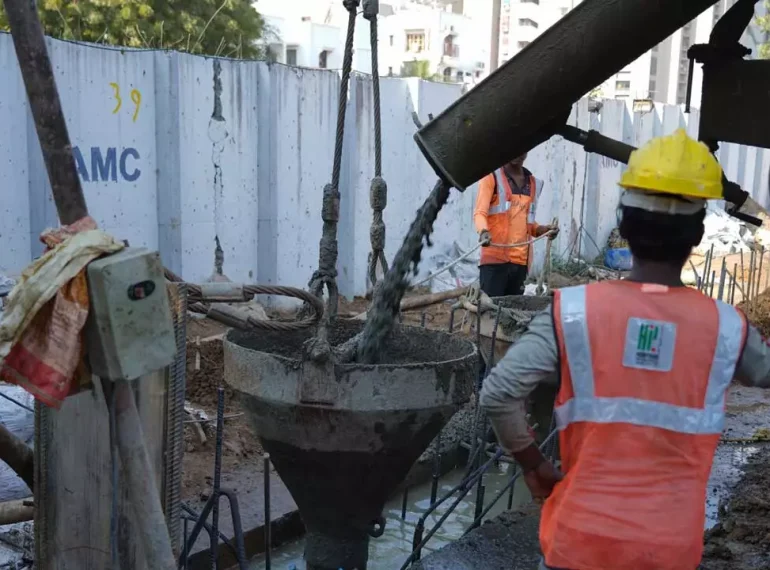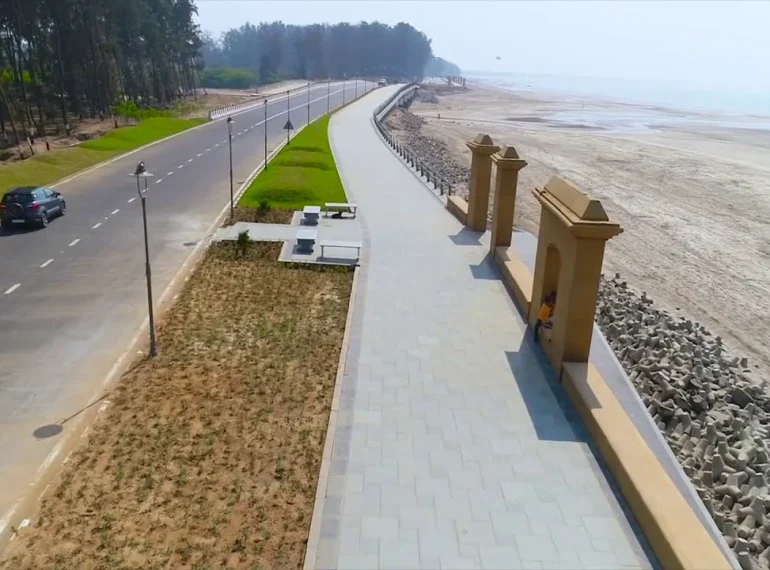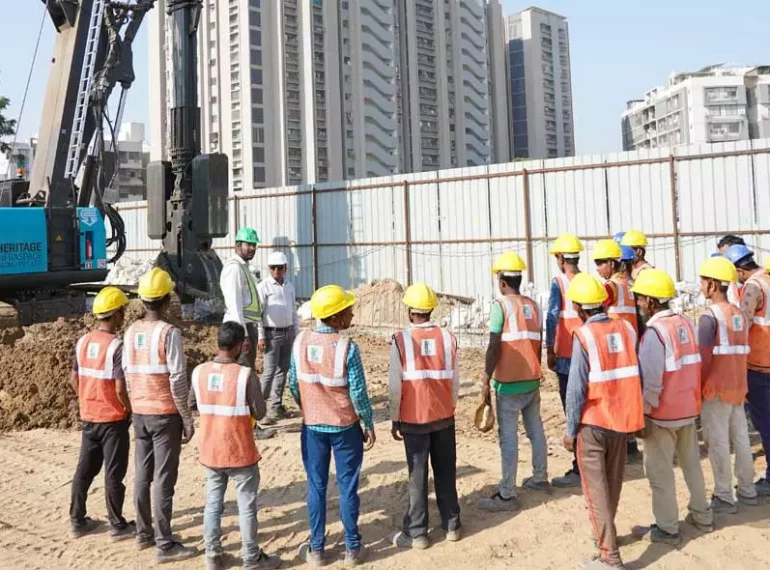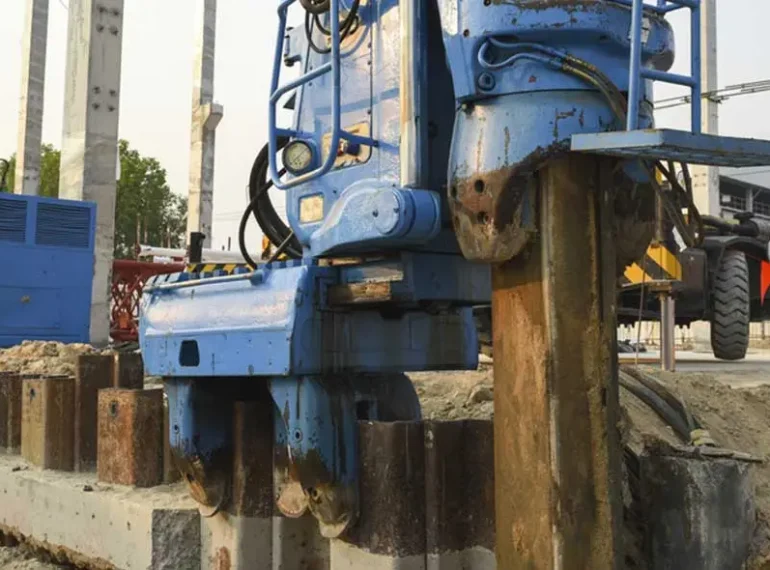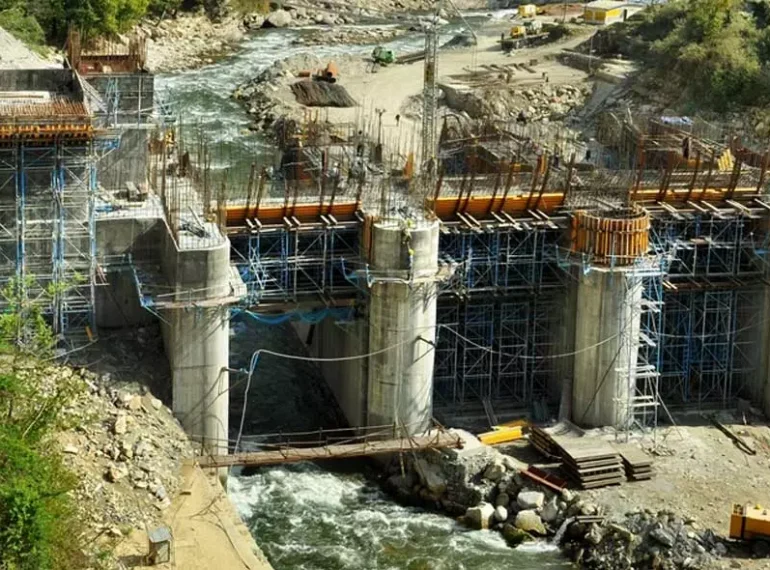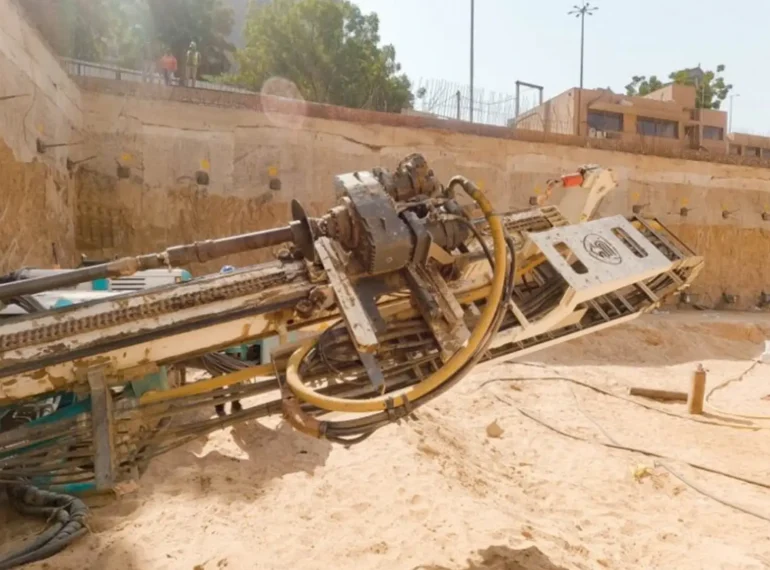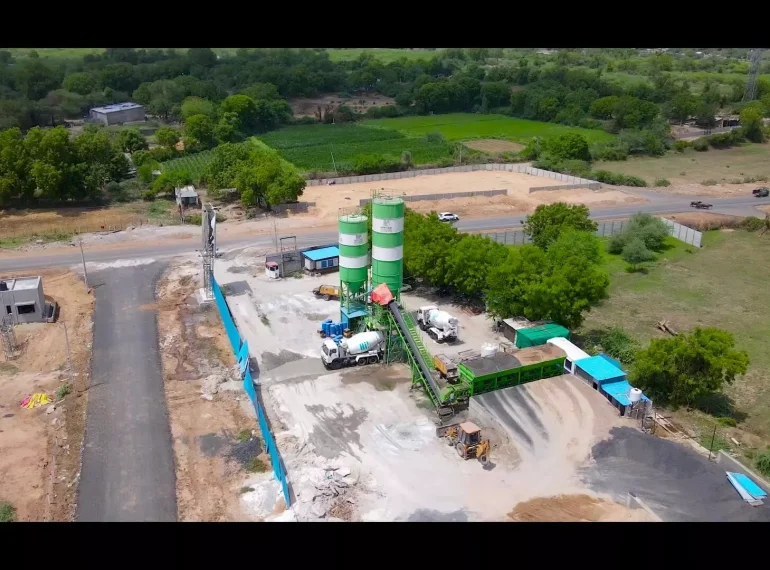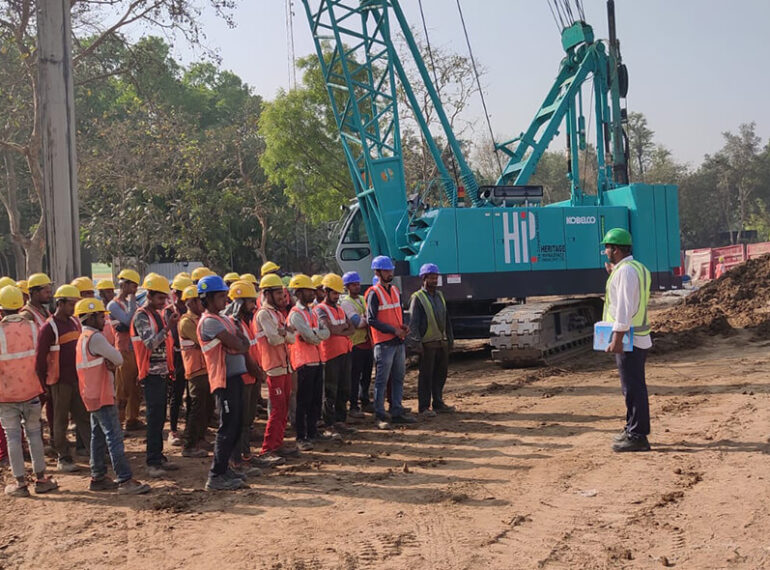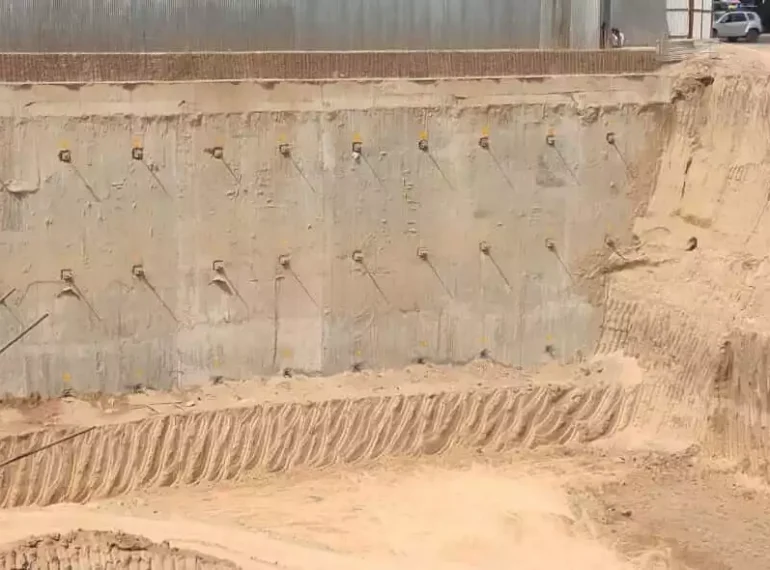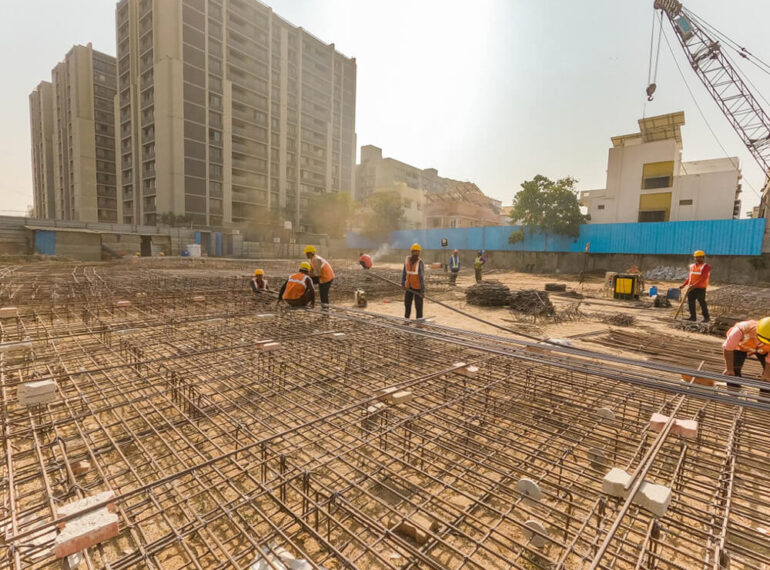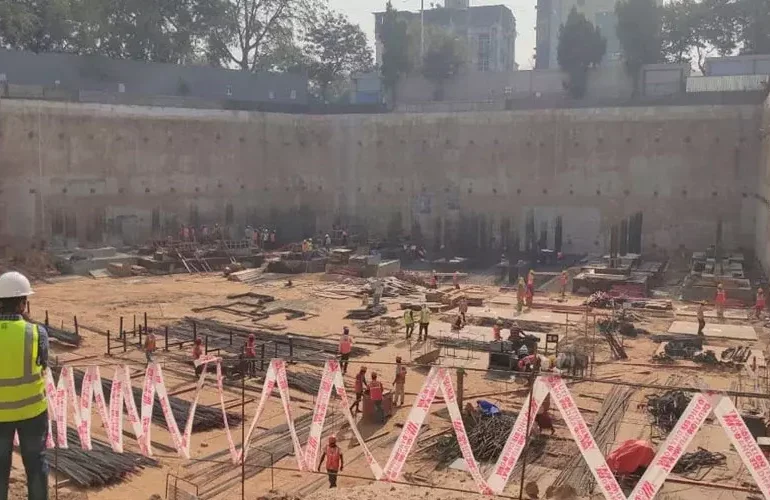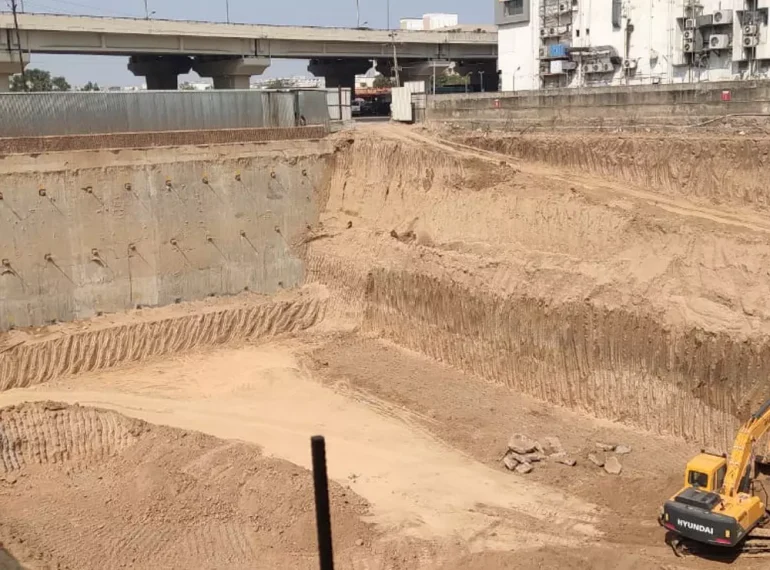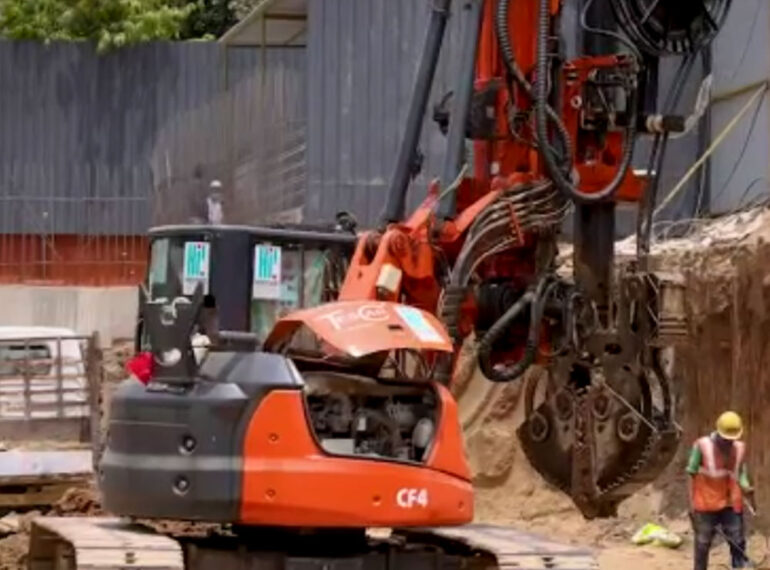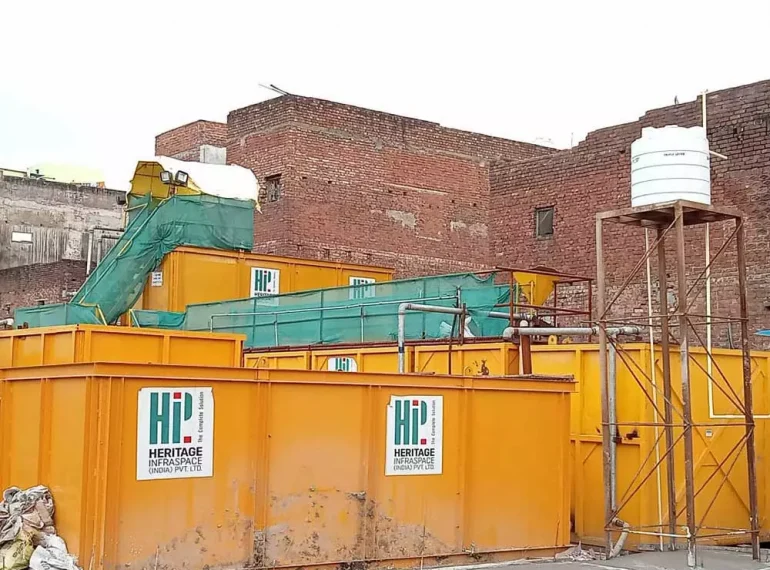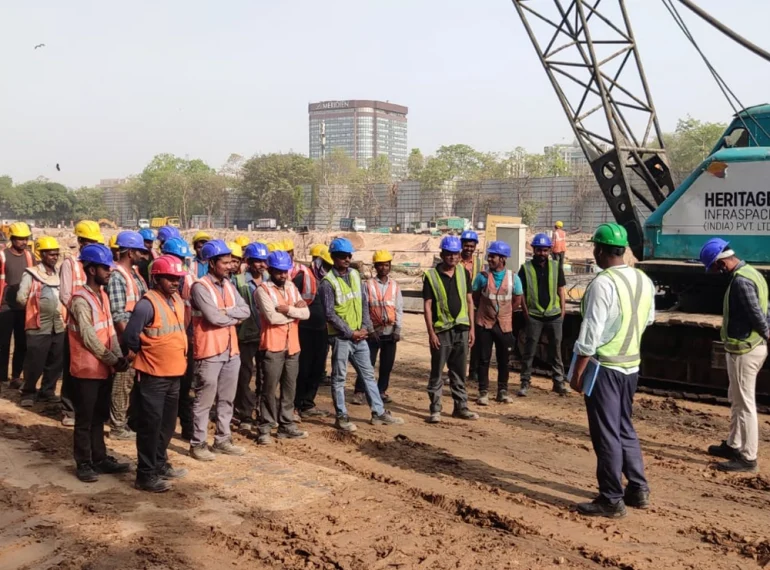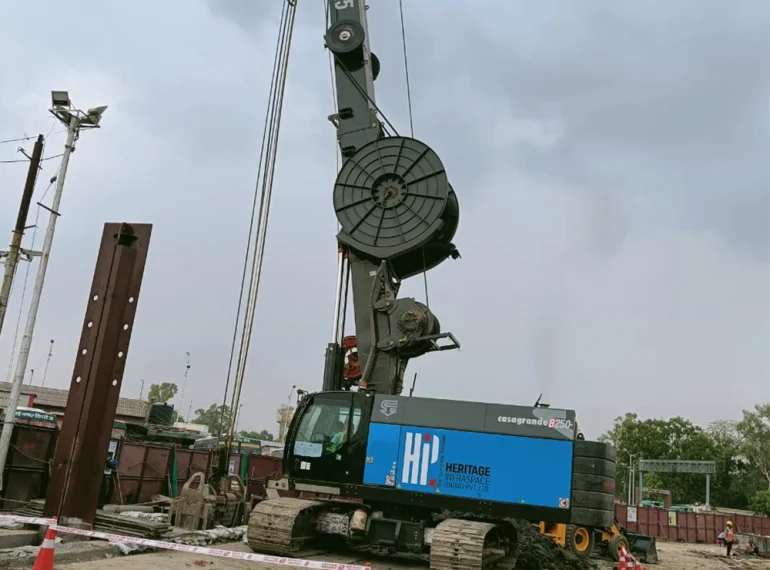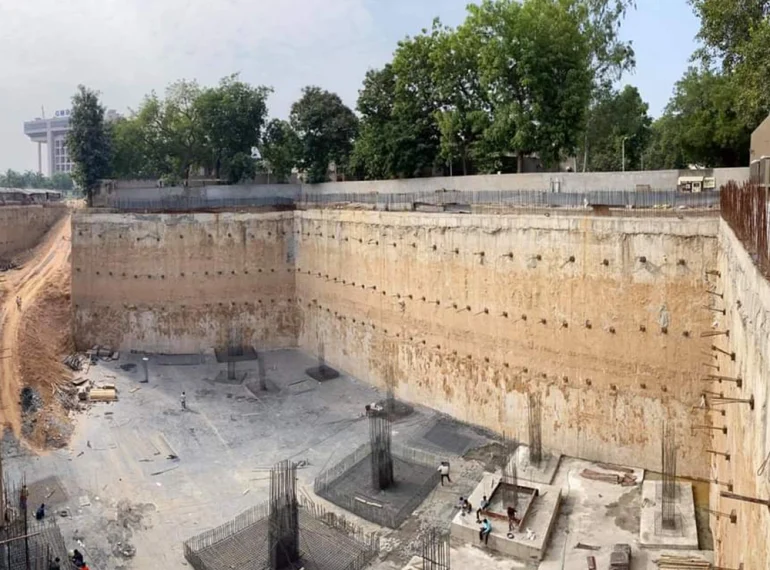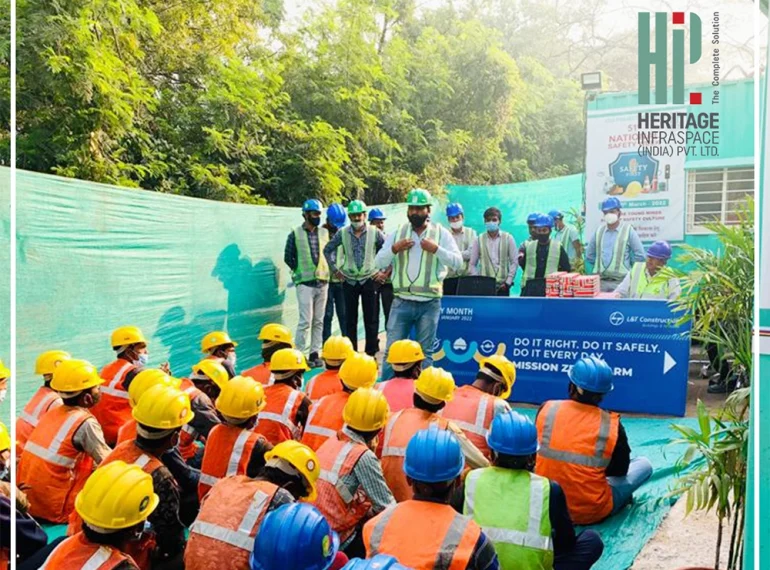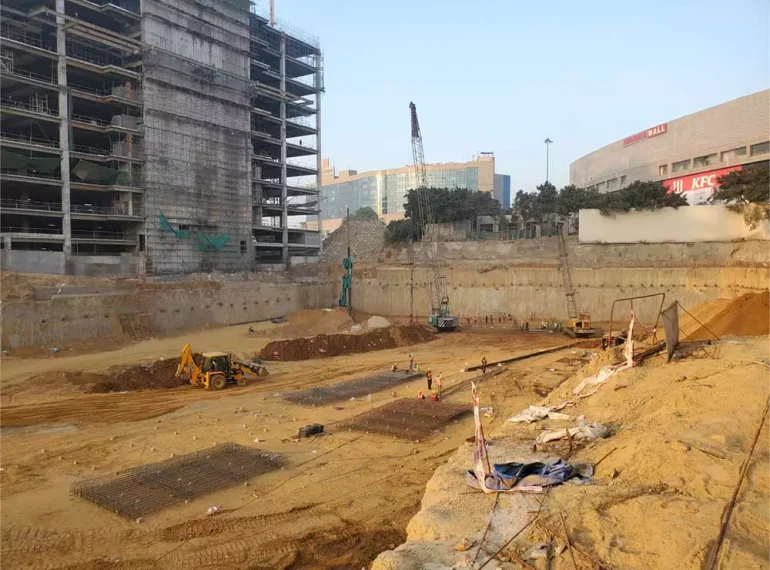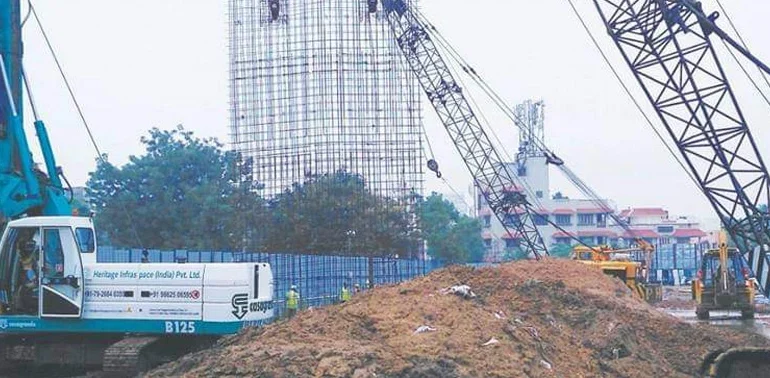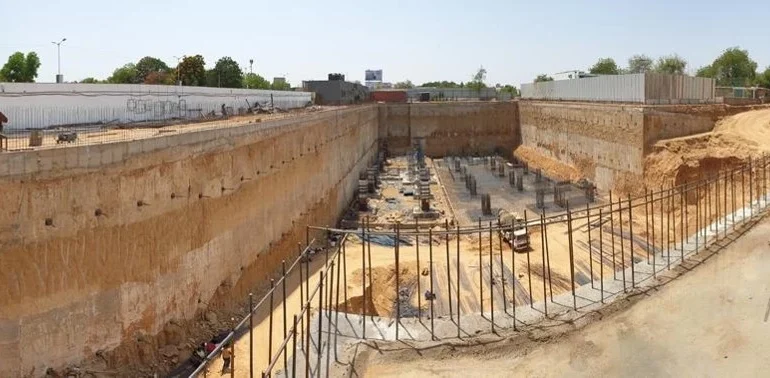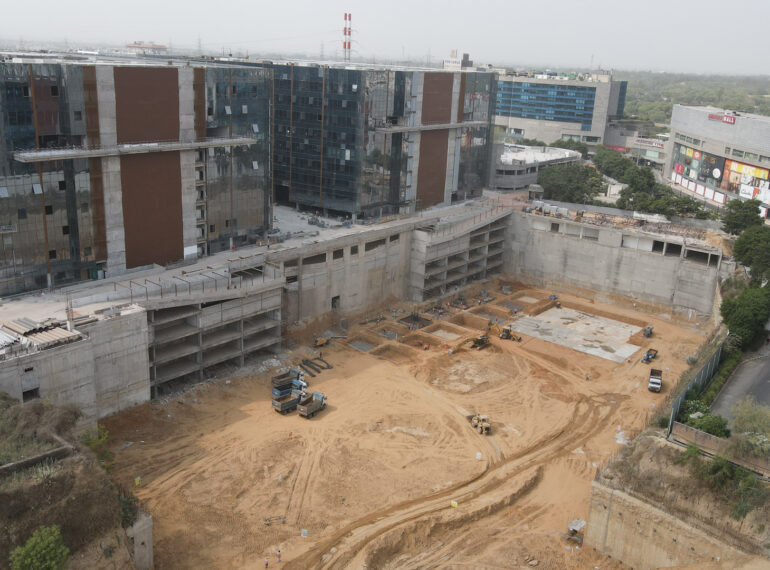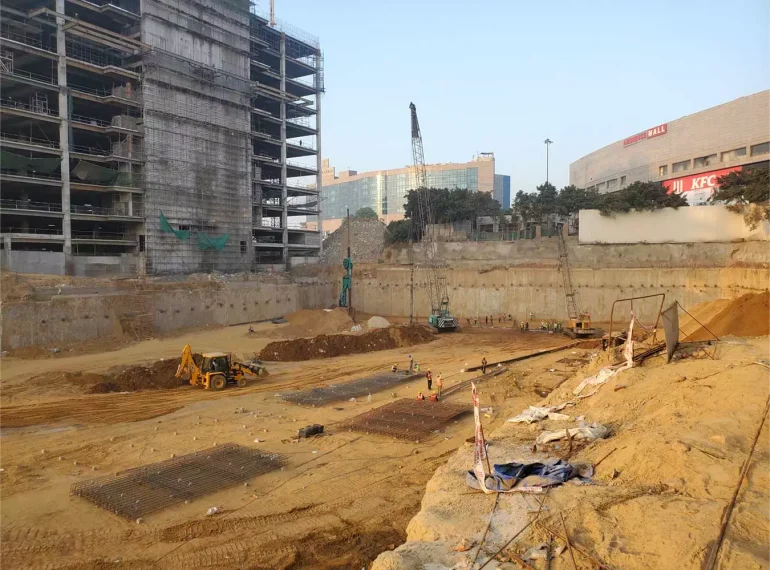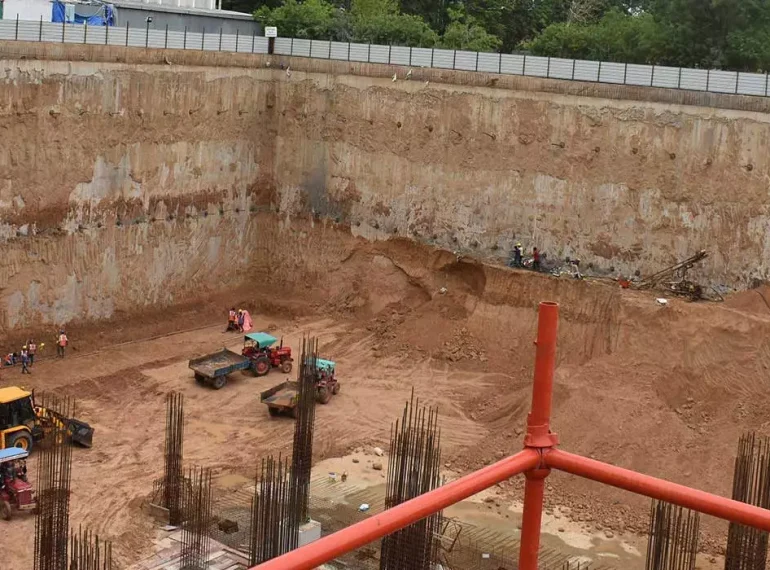It’s 2024 and circumstances are demanding every construction company in India to shift towards sustainable engineering solutions. This turn of tangent is seen in the deep basement construction as well.
Building deep basements in densely populated areas is a common challenge faced by construction companies in India. Excavation for basements can be a time-consuming and expensive process, especially in urban areas where space is limited. Additionally, the excavation process can cause environmental damage, making it essential to consider sustainable construction practices.
Diaphragm walls are one such solution that can provide a strong and stable foundation for deep basements while also contributing to sustainable construction practices.
How? Let’s unravel the answer from the very basics.
What is a Diaphragm Wall?
A diaphragm wall is a type of underground structure that is built to support the soil and create a solid base for the construction of buildings. A diaphragm wall construction involves digging a deep trench, placing steel bars inside it, and filling it with concrete to form a continuous wall that reaches the required depth.
Diaphragm walls are widely used in geotechnical engineering for different purposes, such as basement construction, tunnels and retaining walls. They are a suitable option for d-wall construction, as they offer a high level of strength and stability for the foundation of the building.
Challenges and Solutions in Basement Construction
D-wall construction, or diaphragm wall construction, is a method of building deep basements that involves several challenges, such as excavation and support needs. For example, in crowded urban areas, digging a large trench can be costly and time-consuming. This makes it necessary to adopt a more effective and dependable construction technique, such as top-down construction, which reduces the excavation volume and the impact on the environment.
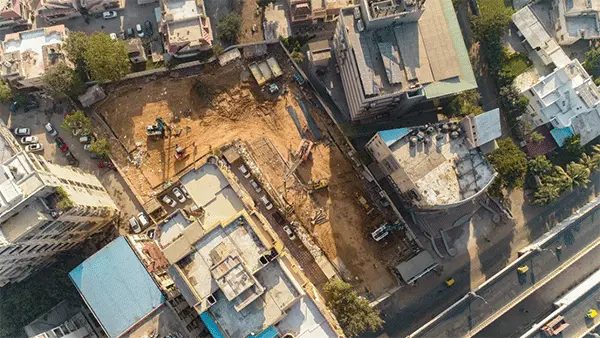
Moreover, when working in the old part of a city, the nearby old and fragile buildings pose an additional risk to the whole project. The digging process can create vibrations that can damage the stability of the adjacent structures. To prevent any accidents, engineers need to apply specific methods, such as shoring and underpinning, to support the soil and the buildings.
Among all these complex requirements, there is also the duty to incorporate more sustainable solutions, such as vibro stone columns, which improve the soil strength and reduce the settlement. All of this makes basement construction a complicated process that demands considerable expertise, a competent team and resources.
Sustainability in Basement Construction
Diaphragm wall construction has many benefits for sustainability. Basement construction can reduce the carbon footprint of buildings by providing insulation, natural cooling and space efficiency. The construction sector accounts for a large share of global carbon emissions and lowering this contribution is vital to fight climate change. Sustainable construction methods can also help preserve natural resources by using materials more wisely. In this regard, d-wall construction leads in sustainability. One of the techniques that can enhance the performance of diaphragm walls is the use of vibro stone columns, which are vertical columns of compacted stones that are inserted into the soil to improve its bearing capacity and reduce its settlement. Vibro stone columns can also reduce the amount of concrete and steel needed for the diaphragm wall construction, saving resources and costs.
Advantages of Diaphragm Walls in Basement Construction
Diaphragm walls are underground structures that are built to create a solid base for building deep basements. They have many benefits, such as providing a strong and stable foundation that can support the load of the structure above. This makes them suitable for building basements in crowded areas where space is scarce. They also prevent groundwater from seeping into the basement and causing structural damage.
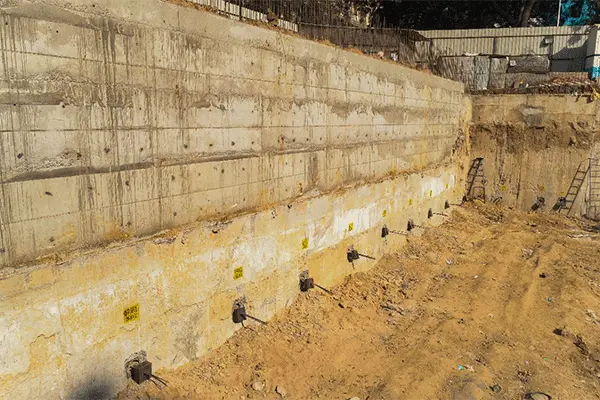
Moreover, they can also protect the nearby structures during digging, avoiding damage to existing buildings and can be used to make retaining walls. These retaining walls prevent soil erosion and provide structural support to the surrounding areas.
Besides these, diaphragm walls also promote sustainable construction practices, and here is how:
Reduce Waste
One of the many eco-friendly ways diaphragm walls contribute is by significantly reducing the construction waste produced. The digging process used for diaphragm wall construction generates less waste than conventional digging methods. This is because diaphragm walls can be made in deeper depths, greatly reducing the need for multiple diggings and the amount of waste produced.
Reusable Formwork
Diaphragm walls can be made using recycled materials, reducing the need for new resources and hence also minimising resource wastage. Another element that adds to sustainability is anchoring in construction, which is the use of a retractable anchor to stabilise the wall. As the top geotechnical infrastructure company in India, HIPL uses anchoring in construction in its projects.
Material Efficiency
Also, the digging process needed for diaphragm wall construction produces less waste than traditional digging methods. This can be seen in terms of the slurry used in the construction. Since the slurry is reusable, it helps in reducing the environmental impact caused by the construction activity.
Efficient use of Space
The construction of diaphragm walls can happen close to existing buildings. This ability allows engineers to use space efficiently in urban areas.
Longevity
Diaphragm walls are designed to be durable and long-lasting, which means that they need minimal maintenance and repair over time. This reduces the need for more construction and the amount of waste generated as a result. Additionally, they act as the supporting structure for multilevel buildings, dams, and meteors above them. With a strong foundation, the longevity of the mega structures also increases.
These were the main ways in basement construction which is moving the engineering sector towards a sustainable future.
Life Cycle Assessment: A way to improve D-wall environmental impact
A life cycle assessment is essential when building basements. It is a tool used to evaluate a product’s or process’s environmental impact from the cradle to the grave. It takes into account the raw materials used, the manufacturing process, transportation, use, and disposal. Conducting a life cycle assessment for basement construction can help identify areas where environmental impact can be reduced Diaphragm Wall Construction can help improve the environmental performance of such assessments. As previously mentioned, diaphragm walls or D-walls can be constructed using recycled materials, reducing the need for new resources. Additionally, the excavation process for d-wall construction generates less waste than traditional excavation methods, reducing the environmental impact of deep basement construction.
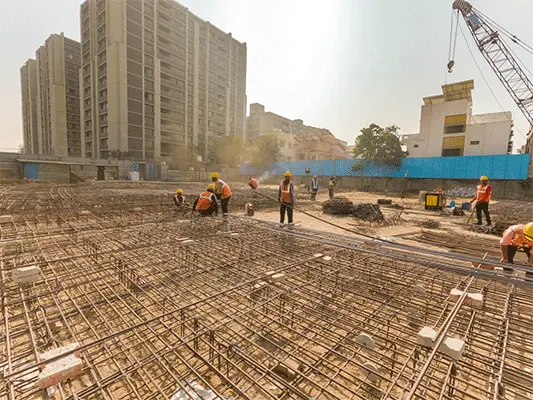
To conclude
Diaphragm walls are a sustainable solution for building deep basements, providing a strong and stable foundation while reducing environmental impact. More energy and resource-efficient practices are essential for reducing carbon emissions, minimising waste, and conserving resources. Diaphragm walls can contribute to the stated practices.
By using recycled materials and generating less waste, diaphragm walls help reduce the environmental impact of deep basement construction.
Construction firms in India can benefit from using diaphragms and contribute to modern practices of sustainability. As urban areas continue to grow and space becomes limited, sustainable solutions like diaphragm walls will become increasingly important in the construction industry.
Any top civil construction company in India planning to build modern residential or commercial structures should consider using diaphragm walls as a sustainable solution for deep basement construction.
By doing so, they can reduce their environmental impact and contribute to a more sustainable future for the construction industry and infrastructure companies in India .
Visit www.heritageconstruction.com to know more about our efforts in sustainable construction.
Frequently Asked Questions
Yes, diaphragm walls are useful when building a basement, as they provide a strong and stable foundation that can support the load of the structure above. They also prevent groundwater from seeping into the basement and causing structural damage. They are suitable for building basements in crowded areas where space is scarce.
Basements are underground spaces that are constructed below the ground level of a building. They can be used for various purposes, such as storage, parking, living, or entertainment. Basements can reduce the carbon footprint of buildings by providing insulation, natural cooling, and space efficiency.
A diaphragm wall in the basement is a type of underground structure that is built to create a solid base for the construction of buildings. A diaphragm wall construction involves digging a deep trench, placing steel bars inside it, and filling it with concrete to form a continuous wall that reaches the required depth. This is also known as d-wall construction.




